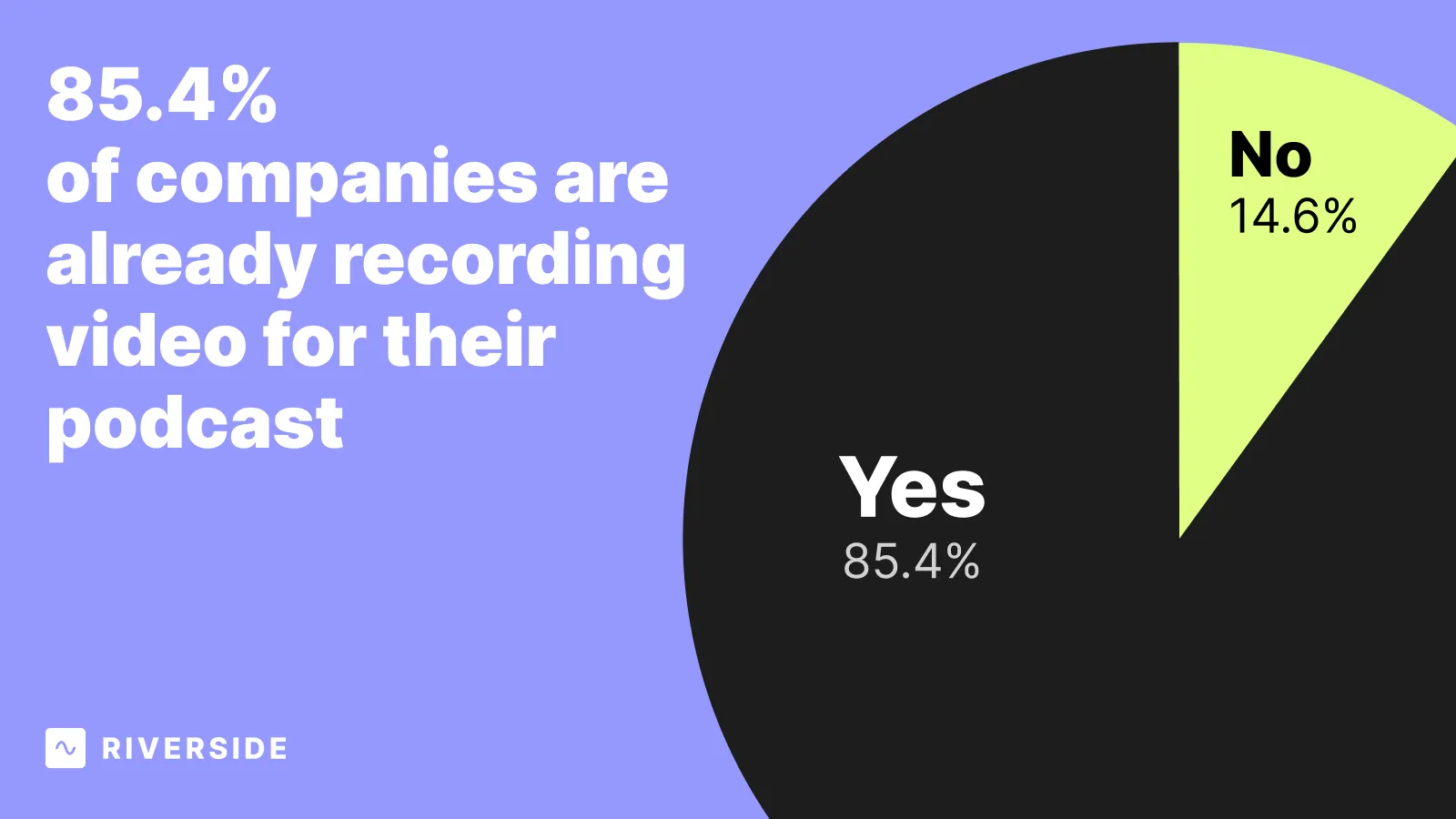Table of contents:
With video podcasting’s momentous rise in popularity, Riverside’s Annual Report dives deeper into this impactful medium. As the 2nd of an 11-part series, this article explores the benefits of video over traditional podcast formats.
What’s in it for me?
By the end of this section, you’ll have key insights on the following points:
- The largest benefits of publishing a video podcast
- The hindrances of publishing video podcasts
With video podcasting becoming more and more prevalent among companies, individual creators, and consumers, it begs the question: why?
In other words, what are the biggest benefits to publishing a podcast containing video versus simply publishing an audio-only show?
In this section, we’ll explore the benefits and hindrances of each side.

Pros of publishing a video podcast
Whether you plan on investing in video for your podcast or not, there are undeniable benefits to optimizing your podcasting efforts around video. Let’s dive into the most impactful benefits and outline the core reasoning behind each.
Video gives richer context
A video inherently contains all mediums inside itself. With a video, you get the visual, audio, captions, and static imagery. This allows for more flexibility both in editing and promotion of the content.
Video helps you reach a new audience
The content world is driven by video and visuals because that’s what consumption demands. People want to see and hear all at once, and the platforms must award that to users. By using video, you open yourself up to new audiences that simply prefer it as a medium to audio-only content.
Video produces higher discoverability
Discoverability is the biggest challenge facing traditional audio-only podcast distribution. Podcasts are not inherently easy to find because titles are often not keyword-focused. Every platform tackles discoverability differently, and no unified hub exists to find new recommendations. YouTube, in particular, does discovery very well.
Video adds SEO value
Search engines are increasingly favoring video over other content in results pages. This trend is likely to continue and accelerate over time. Your podcast could become more searchable simply by uploading it to YouTube and optimizing the metadata accordingly.
Video offers opportunities for microcontent
Distribution is considerably more simple when you can break down the medium into any format. One video podcast episode can easily become multiple short video clips for TikTok, an audiogram for Instagram, several tweets, a blog post, and more.
Video drives higher engagement
Listener loyalty builds podcast retention. Over 36% of surveyed companies reported that developing loyalty and affinity was the main goal of their show. Video retention relies on hooking interest. When these strategies are combined, it creates engaging content that forms strong connections.
Video is optimized for sharing
Video lends itself to multiple calls to action. A podcast allows you to say out loud what you’d like an audience to do. A video allows you to say it and show it without much interruption at all. This leads to more opportunities to invite audiences to action, and a higher propensity to share.
Video gives you more opportunities to monetize
The core monetization method for podcasting is ad sponsorship. Video platforms offer various monetization methods, including sponsorship, revenue from ads, influencer deals, partnerships, and creator programs. While audio-only podcasts have access to similar methods, YouTube makes each of these easier to implement. For example, TikTok and YouTube boast two of the best creator programs on the market. The ability to monetize in multiple ways from these channels is unparalleled.
Video makes content more personal
The ability to view a podcast changes the game in terms of reading body language and visual cues. This adds an extra layer of personalization and connection to each episode. As a result, you may find increased brand loyalty to your show and even higher trust than before.
Cons of publishing a video podcast
Video requires a reframing of your content and processes
When you add video to the mix, you need to re-strategize your content altogether. Knowing that your interviews need to be video-worthy can change elements in your software setup, visuals, and physical equipment. Traditional audio-only shows will likely need new equipment, lighting, cameras, and much more. Introducing video into your strategy may be a challenge if it's completely new to your company.
Video requires more time to produce and edit
Video production requires extra time compared to audio due to the different processes involved in set up and post-production. The editing process is also a significant change in workflow when adding video, as it typically requires more resources (especially if you plan to create promotional clips) to finalize. However, there are tools available to help reduce the time spent on editing and even overlap it with audio files.
Video requires a different skillset
Podcasts that add on video may need help from new people with different skill sets. Producers are talented and versatile, but different processes require different skill levels and abilities.
Tying it all together
Publishing a video podcast has numerous benefits that enhance your podcasting. Video provides richer context, helps you reach new audiences, and opens up more streamlined opportunities for monetization. Video also drives engagement, boosts shareability, and builds personal connections with viewers. There may be additional time and resources required for production, but the rewards are significant.
As technology progresses, the hindrances are bound to be lightened over time. It will only become easier to go all in on video as a crucial supplement to your audio content.
Read more from the 2023 Riverside Annual Report series:
















.webp)


